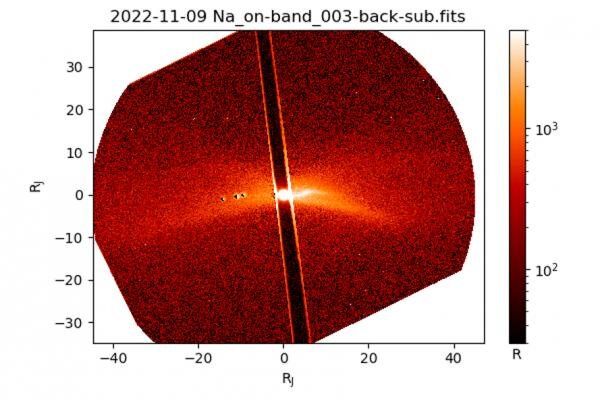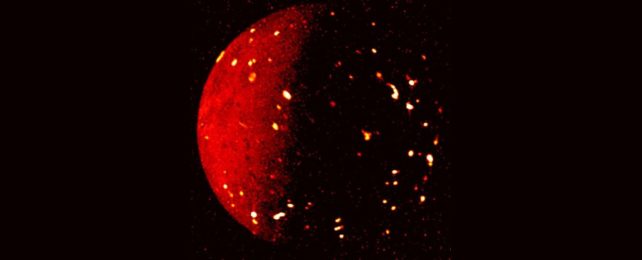The most powerful volcanic eruptions in the Solar System occur not on Earth, but on Io, a sulfurous moon orbiting the planet Jupiter.
And now, researchers from the Planetary Science Institute (PSI) in the US have noticed a recent outburst that's been surprisingly productive, even for a hellish world like Io.
In the space around Jupiter, a torus of plasma created and fed by Io's volcanic emissions grew significantly richer between July and September of last year and persisted until December, showing the moon underwent a spate of volcanic activity that released a huge amount of material.
For something that's just a little bit bigger than Earth's Moon, Io is an absolute beast of volcanism. It's bristling with volcanoes, with around 150 of the 400 known volcanoes erupting at any given time, creating vast lakes of molten lava.
This is all down to its relationship with Jupiter: Io orbits on an elliptical path, resulting in variations in the gravitational pull that change the shape of the moon as it swings around the planet.
The other Galilean moons tug on Io too. This creates frictional heating inside Io, which then spews out molten material from its interior.
What happens to the volcanic emissions from Io then has an effect on Jupiter. Because Io has no magnetic field of its own, the sulfur dioxide escapes, forming a torus of plasma that orbits Jupiter.
This is what feeds the permanent ultraviolet auroras that shimmer at Jupiter's poles – the most powerful auroras in the Solar System.
This complex interplay is fascinating in its own right, of course. But it can also help inform other interactions of a similar nature that may be occurring out there in the broader galaxy.
So PSI astronomer Jeff Morgenthaler has been keeping an eye on Io by using the PSI's Io Input/Output observatory (IoIO) since 2017.

Jupiter is very big and very bright, so IoIO uses a coronagraphic technique: effectively minimizing the light shining off Jupiter so that Mogenthaler can see the light emitted by other things in the space around it, including the plasma torus.
This is how he sees that Io has a volcanic outburst every year; and how he was able to see that sulfur and sodium were being pumped into the torus in fall of last year.
However, while the quantities were huge, the torus was dimmer than other years. We don't know what this means, yet, but unraveling it could tell us something new about the fiery dance between Jupiter and Io.
"This could be telling us something about the composition of the volcanic activity that produced the outburst or it could be telling us that the torus is more efficient at ridding itself of material when more material is thrown into it," Morgenthaler says.
We'll have to wait to learn more, but with IoIO on the ground and Juno currently orbiting Jupiter, additional information about the plasma torus will be coming in, especially since Juno can measure changes in Jupiter's plasma environment.
In addition, Juno will be performing a flyby of Io in December 2023, so we're looking forward to a wealth of information on the smelly yellow moon.
"Juno measurements," Morgenthaler says, "may be able to tell us if this volcanic outburst had a different composition than previous ones."
